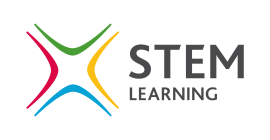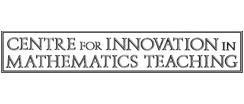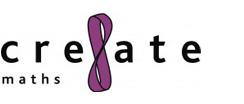Careers involving data and statistics
A series of careers-based teaching resources and lesson plans designed to cover data and statistical topics within the mathematics curriculum.
Mathematics for Engineering Exemplars
These Mathematics for Engineering exemplars provide support for teachers using contextualised mathematics, and help students gain fluency in the use of mathematics for practical problem solving.
This collection also illustrates some of the mathematics in the Advanced Diploma in Engineering, undertaken by engineers.
Real life maths - Anna Fraszczyk
STEM Ambassador Anna Fraszczyk is a Newcastle University researcher for NewRail. Her role involves supporting the teaching and learning activities at NewRail by mentoring students, engaging with stakeholders (people who own or have invested in the company) and organising and coordinating rail education activities and events.
Real life maths - Karen Dawe
Dr Karen Dawe is a STEM Ambassador and Research Associate for ALSPAC (Avon Longitudinal Study of Parents and Children aka 'children of the 90's'). She is in charge of data quality for the ‘Focus on Mothers’ clinic which is gathering data on the mums of the ‘children of the 90s’. She writes monthly reports on quality and accuracy of data and advises fieldworkers (the nurses that work with the mums) on how to improve and maintain data quality. She is also part of a team of ‘data buddies’ who create data files for research collaborators around the world and advises them on how to get the best from their data.
Mathematics in Real Life Contexts - Air Travel
A collection of three resources exploring the mathematics used in air travel. Students explore:
- Scheduling of aircraft, the construction of timetables and dealing with time zone differences
- Scheduling pilots, using formulae to calculate the working time of pilots
- The use of formulae to calculate flight charges accrued by aircraft flying over different countries
Maths Careers: Statistically safe sex
This collection contains a range of teaching materials to support the Maths Careers articles 'Statistically safe sex' and 'How to have a healthy sex life'.
The resource collection includes a link to both articles, resources to explore the statistics and probability behind them.
Maths Careers: Big Data Careers
This collection contains a range of teaching materials to support the Maths Careers article 'Big Data Careers'.
The resource collection includes a link to the full article, resources to explore large data sets in real-life contexts. Activities include a look at how statistics help us understand the world, a look at the miss-match between real and perceived risk and a debate around whether we should sequence the genomes of a million people in order to find out more about living longer and healthier. Also included is a link to the CensusAtSchool project provides access to large and meaningful data sets for classroom use.
Maths Careers: The maths of online dating
This collection contains a range of teaching materials to support the Maths Careers article 'The maths of online dating' by Hazel Lewis. The resource collection includes a link to the full article, explores what makes people attractive and classroom resources for teaching algorithms, modeling and correlation as well as ideas for how to incorporate these topics in real-life contexts. Activities include a classroom discussion on attractiveness leading to exploration of the golden ratio, and chance to use an algorithm by applying the scoring system used for the Olympic heptathlon event. Correlation is explored via an activity around choosing favourite songs.
The number-one crime fighter
Article about the mathematics behind forensic accounting. Using Benfords law to look at distributions and how unexpected patterns in number sets can be a red flag. A brief look at how this law can be applied outside of financial data is included.
Contagion! Using mathematical models to save lives
Article about epidemiology and mathematics. In the event of a pandemic researchers rely on mathematical models which predict how a disease might spread. This helps to plan the allocation of resources and different approaches to minimise the spread of the disease.
Careers: actuary, risk manager
Article about risk management, a career choice that uses mathematics. All organizations are exposed to risk of one sort of another. For some industries, a qualitative assessment of low, medium and high risk is fine; for others, more complicated mathematical techniques need to be enlisted. A look at the work of actuaries, risk managers in finance, and other career areas.
What do statisticians do all day?
Article about working as a descriptive or inferential statistician. Descriptive statistics involves taking a large amount of data and extracting some type of information or meaning from them. This could be a single number, such as a percentage or an average, or a visual display like a pie chart. In contrast, inferential statistics tries to extrapolate data to reach wider conclusions.
The best medicine?
Article about the use of statistics in medicine. Statistics are used in diagnosis, treatment, and outcomes of patients. There are also statistics relating to prevention and risk.
Career interview: Medical statistician
Interview with a medical statistician who studied for an undergraduate maths degree and then moved into medical statistics. The article shows the role this field plays in medical trials for a new drug and a look at the role of the Medicines Control Agency which is part of the Department of Health.
Careers in Operational Research (O.R.)
A collection of video interviews showing how O.R is used in the real world. These videos, produced by the O.R Society, aim to explain what Operational Research (O.R.) is through a wide range of case studies and can be used to highlight ‘real-life’ applications of mathematics. The videos can also be used to help make career choices as they demonstrate the variety and type of work that can be undertaken in the profession. The videos complement study in many areas of mathematics, especially decision mathematics. The use of OR in travel, logistics, and hospitals is explored.
cre8ate maths
Cre8ate resources explore twelve different employment sectors, and include activities that relate to the industrial or work related aspects of the context. The key characteristic of all the resources is that they link real and significant mathematical thinking with authentic real world applications.





